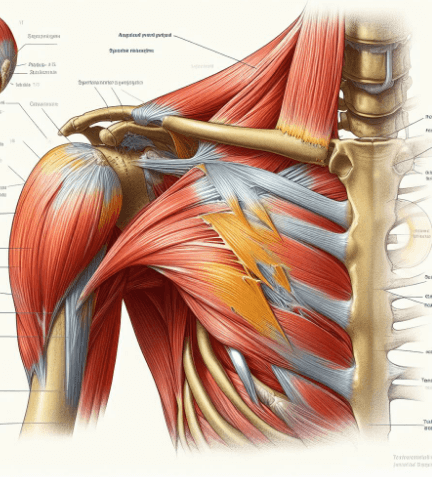Quick Overview
The drop arm test is a simple and non-invasive test which is used to diagnose rotator cuff tears. This test is performed to assesses the integrity of the supraspinatus tendon, which is a key muscle in the rotator cuff.
The test is performed by having the patient passively abduct their arm to 90 degrees and then release the arm. If the patient is unable to slowly control the lowering of the arm, then the test is considered to be positive.

Table of Contents
Anatomy
The rotator cuff is a group of four muscles and tendons that attach the upper arm bone (humerus) to the shoulder blade (scapula). The four rotator cuff muscles are the supraspinatus, infraspinatus, teres minor, and subscapularis. The supraspinatus tendon is the most commonly injured rotator cuff tendon.
Read also Sharp Purser Test and Talar Tilt Test
Indications of Drop Arm Test
The drop arm test is typically indicated for patients with shoulder pain and weakness. This test may also be used to monitor the progression of a known rotator cuff tear or to assess the success of treatment.
Procedure
Step by step guide to perform drop arm test is ;
- The patient stands or sits with their affected arm at their side.
- The examiner passively abducts the patient’s arm to 90 degrees and externally rotates the arm fully.
- The examiner then releases their support of the patient’s arm and asks the patient to slowly lower the arm back to their side.
Interpretation
A positive drop arm test is indicated when the patient is unable to slowly control the lowering of their arm. This may be due to weakness of the supraspinatus muscle or a tear of the supraspinatus tendon.
Accuracy
The drop arm test has a sensitivity of 73% and a specificity of 77% for diagnosing full-thickness tears of the supraspinatus tendon. This means that the test is positive in 73% of patients with a full-thickness tear of the supraspinatus tendon and negative in 77% of patients without a tear.
Limitations
The drop arm test is not a perfect test. It may be negative in some patients with a rotator cuff tear and positive in some patients without a tear. This is why it is important to consider other factors, such as the patient’s history, physical examination, and other diagnostic tests, when making a diagnosis of a rotator cuff tear.
Other Shoulder Tests
In addition to the drop arm test, there are a number of other shoulder tests that can be used to assess rotator cuff function and diagnose rotator cuff tears. These tests include the empty can test, external rotation lag sign, internal rotation lag sign, and Hornblower test.
Radiographic Imaging
If the drop arm test or other shoulder tests are positive, then the patient may be referred for radiographic imaging, such as an X-ray or MRI. Radiographic imaging can help to confirm the diagnosis of a rotator cuff tear and assess the severity of the tear.
Treatment
The treatment for a rotator cuff tear depends on the severity of the tear and the patient’s symptoms. Treatment options include physical therapy, cortisone injections, and surgery.
Question
1. What is a Drop Arm Test?
The Drop Arm Test is a clinical assessment used by healthcare practitioners to evaluate the function and integrity of the supraspinatus muscle, which is part of the rotator cuff in the shoulder. This test helps identify potential issues or injuries in the shoulder area.
2. What does the Drop Arm Test test for?
The Drop Arm Test primarily assesses the condition of the supraspinatus muscle and can detect problems such as rotator cuff tears or shoulder impingement syndrome. A positive test result suggests issues with the muscle or associated structures, while a negative result indicates normal function.
3. What do Positive and Negative Drop Arm Test Results Indicate?
Positive Test: If a patient experiences pain or weakness during the Drop Arm Test and cannot maintain controlled abduction of the arm, it suggests a potential problem. This could include a rotator cuff tear, shoulder impingement, or other shoulder pathologies.
Negative Test: A negative result means that the supraspinatus muscle and rotator cuff are likely functioning correctly, and no significant issues are detected.
4. How is the Drop Arm Test Performed?
To perform the Drop Arm Test, the patient’s arm is raised away from the body in a controlled starting position. The examiner then instructs the patient to slowly lower their arm to their side. During this movement, the examiner observes for any signs of pain, weakness, or the inability to control the arm’s descent.
5. The Drop Arm Test is Used to Determine Injury to What Muscle?
The Drop Arm Test is primarily used to determine injury or dysfunction in the supraspinatus muscle, which is one of the four muscles that make up the rotator cuff in the shoulder. Evaluating the supraspinatus muscle’s function is crucial in diagnosing and managing various shoulder conditions and injuries.
